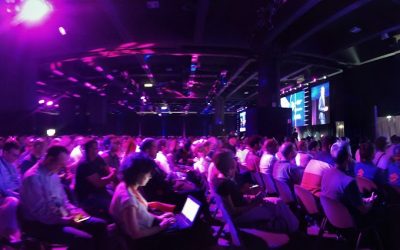MATRIX: BLUE OR RED PILL?
“Have you ever dreamed of such a realistic dream to be true? And if by such a dream do not I wake up anymore? How could you distinguish the world of dreams from that of reality?”
These are the words Morpheus told Neo in Matrix movie to prepare him to face the greatest shock of his life: to find out all he considered real since his birth was, actually, fiction.
The Wachowski brothers’ work has been so successful that it has influenced part of the collective imagination of the last two generations. This veneration is probably due to the fact that history faces a suggestion that for many years has been fascinating many people: is what we live actually real?
Matrix is just a step in this research path, ranging from entertainment to research projects. In the 1950s, for example, the Candid Camera program had a great public interest, as they enjoyed watching the reactions of people in completely artificial situations in which, however, the victims were convinced of living something natural, spontaneous. And over the time, the theme has often appeared in movies or novels, just think to the Star Trek hologram bridge or The Truman Show plot.
VIRTUAL REALITY IS BACK TO THE TOP
The renewed interest around virtual reality has increased the debate around this topic, especially in recent times. And, when Elon Musk, the visionary businessman, who created, among other things, the automotive brand Telsa and has always been interested in technological and scientific issues, said with the utmost seriousness that “there is a chance on a billion the reality we live in is not a simulation“. Clearly, after that, suggestions (and unrest) have reached very high levels.
Therefore, it is legitimate to ask: once cleansed by all the emotional and folkloric components, does what remains about this hypothesis deserve a deepening? Is it really so probable that we too are victims and slaves of a matrix that rages us with a freedom that we do not have? I do not have the presumption of giving a definitive answer to the question, but I will try to give some points of reflection.
First of all: what do we mean with “reality”? It is a concept that is certainly familiar to us, but that is really difficult to formalize in words.
A definition that is often found is
“real: what actually exists, usually in contrast to what is illusory, imaginary or fictitious,”
but it is in my opinion a somewhat smart way to circumvent the problem. I construct a definition from the contrast of another definition. Reality is what is not illusory.
So what is meant by “illusory”?
Philosophy and science (especially physical and chemical) have been trying to find a way to describe reality with great precision for centuries. Real is what I can perceive, measure, understand, predict. The force of gravity is real: I feel it acting on my body, I can measure it using a scale, for example, thanks to Newton I understand its functioning and thanks to its laws I can, for example, predict how much time a ball takes to cover an inclined plane with a known length and slope.
REALITY IS THE SET OF MATHEMATIC FORMULAS
During the eighteenth century, in the heart of the age of Enlightenment, there was the conviction that everything could be explained. Or, seeing it in another way, it is possible to describe any phenomenon that governs our universe, with equations, numbers or algorithms. It was enough to have patience and constancy. Perhaps the equations or algorithms that accurately described the more complex phenomena would be very much complicated, but this did not exclude their existence. From the point of view of computer science it can be said that if people during the Enlightenment were right, possessing a powerful enough computer and having enough time, it would be possible to reproduce any natural phenomenon, foreseeing its developments, with mathematical certainty, starting from a given initial condition. We should therefore be able to simulate it, to “virtualize it”: we have not yet tested whether Musk is right but his scenario seems at least feasible.
There is, however, a somewhat disturbing aspect: if nature is fully represented by a set of numbers and algorithms then we are also subjected to this law: we are ultimately part of nature, and our body is also governed by the laws of physics.
What does it mean? For each of us there is an “algorithm” (or a set of formulas) that describes, for example, with absolute precision what we are about to do, what we will decide in a day, in a year. Immensely complex laws, but they are carved on the stone. It would be the definitive death of the concept of free wil. No matter how much people are going to win over goals and freedom, things will always go according to existing schemes. Or, to put it another way: our destiny would have been written before our birth.
HEISENBERG AND THE PRINCIPLE OF INDETERMINATION
Werner Karl Heisenberg, a German physicist and one of the fathers of quantum mechanics (whose name, among other things, was used in the famous Breaking Bad television series) introduced the famous principle of indetermination in 1927. According to this principle the simultaneous measure of two conjugated variables, such as position and amount of motion, or energy and time, can not be accomplished without a minimal ineliminable uncertainty. In less technical terms: it is impossible to be able to accurately measure any natural phenomenon. The more the system becomes complex, the smaller the size of the variables, and the less accurate our reading attempt. Thus, the idea of being able to write accurately a series of laws, that fully describes what surrounds us, is vanishing because the very concept of “precision” is illusory.
We have just saved the free will, unfortunately the principle of indeterminacy also seems to hinder us in our search for the truth of our universe. In a hypothetical race to build ever more powerful microscopes to find a greetings from agent Smith attached to subatomic particles, the principle of indetermination tells us that at some point the images will begin to blurr, and the more we try to enlarge and the more blurry will be the result, until it is impossible to distinguish anything.
If we were within a simulation created by a superior breed, which has therefore created a universe in a test tube tailored for us, it would be “enough” for the resolution of this creation to be superior to our ability to distinguish between blur and not, and we would not, therefore, be able to find the traces of the matrix that hosts us.
So have we “lost”? Maybe not.
PRIME NUMBERS
An unexpected ally to answer this question could come from math. Specifically from the prime numbers.
You have surely heard of it, otherwise here is the definition: a prime is an integer that can not be divisible by any other number, except itself and one, getting a whole number again.
Six is not a prime number, in fact, if I divide it by three I get two, which is an integer, twenty-one is not a prime number, I can divide it for seven and for three and get full results again. Thirtyseven, instead, is a prime: there is no integer that can divide it, except for thirtyseven, and of course, one (which is never considered because all the numbers are divisible by one).
It is common to say, with a bit of romance, that the prime numbers are the bricks that build all the existing numbers. In fact, each number can be represented as the multiplication of prime numbers. Take for example any number: 14472. This number can be obtained by multiplying the two by three times, the three by three times, and finally the result for sixtyseven. Two, three and sixtyseven are prime numbers, so 14472 is constructible using these three single bricks.
Another feature to make the prime numbers special is the difficulty of figuring out whether a number is a prime or not. In other words, taking any number, the search for bricks that make it is a very complex job, whose complexity increases in a nonlinear way as numbers become bigger. As a corollary: determining whether a number is a prime represents a very hard challenge, especially if the number is high. If you asked me to tell you if 32416190071 was a prime number, I would “force you” to make as many divisions as there are the prime numbers between one and 32416190071. Believe me: there are so many operations. Just one of these gives you an entire result and the number is not a prime. If it really was a prime, you would find out only after you executed it all (for the record: 32416190071 is a prime number). Also, you should have a list with all the top numbers found so far to know which divisions you should make. This difficulty is at the basis of all modern encryption, if anyone discovered a quick and easy way to break down a number of factors first, the whole world economy would collapse instantly. Fortunately, we are quite confident (although not sure) that this method does not exist.
As I write this article, the higher prime known number is 2 ^ 74207281 – 1, an elegant way to avoid writing it in full, as otherwise I would use more than twenty-two million characters. A research effort that required months of joint work of tens of thousands of computers.
Is it the greatest? Are there others? Yes: the prime numbers are infinite. Euclid discovered it in 300 BC, and other demonstrations were later formulated. I will not bother you with technical details, but for the curious ones, here you can find some information.
THE FIRST NUMBERS AND SIMULATED REALITY
Let’s return to our simulated reality: if we lived within a “Matrix,” this simulation should be able to consistently represent all the laws of physics and mathematics, including the structure of the prime numbers. And since there is no way to generate prime numbers in a simple way, then a computational structure would need that:
- enough speed
- enough memoryTo be able to provide the prime numbers we seek, from time to time. And, being these infinite, it should, therefore, have infinite memory and infinite speed, this is frankly unlikely.
CONCLUSIONS
We came to the end: we live in a universe made of physical and mathematical rules, if our reality was a simulation, they too should be simulated. But, as seen, simulating the generation of prime numbers is a big problem: as far as the civilization has evolved it would ultimately meet its limits in its ability to cope with infinite complexity problems.
So is Musk wrong?
Maybe not. Until now, we have always been able to find new, bigger and bigger numbers, encouraged by the certainty that they will never end. But if one day we suddenly find out that despite the efforts, despite the patience, no new prime appears, maybe it would be worth asking if it is time to take the famous red pill …



